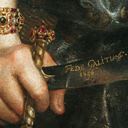0272 "Iussu patris"? Prolegomena on Form and Function of Women Artists’ Signatures in the Early Modern Period
Identifiers (Article)
Abstract
This article aims to give for the first time an overview of the form and function of women artists’ signatures in early modern Europe, with a particular focus on Italy. Through an analysis of the frequency with which women artists signed their works as well as the iconic and textual form of the inscriptions, it establishes a number of peculiarities that distinguish female from male signing practice. It attempts then to explain these differences by the specific sociocultural conditions under which artistic activity by women was possible and accepted. The central thesis is that the frequency and particular textual form of women’s signatures were prompted by the special interest of patrons and collectors in works created by female artists. Rather than an expression of their authors’ self-assurance as artists in a field dominated by men, as earlier scholarship tended to assume, the characteristics of female signing practice were often an index of their limited autonomy.
Statistics


Published (Versions)
- 2022-09-06 (2)
- 2022-04-01 (1)
License

This work is licensed under a Creative Commons Attribution-NonCommercial-NoDerivatives 4.0 International License.



